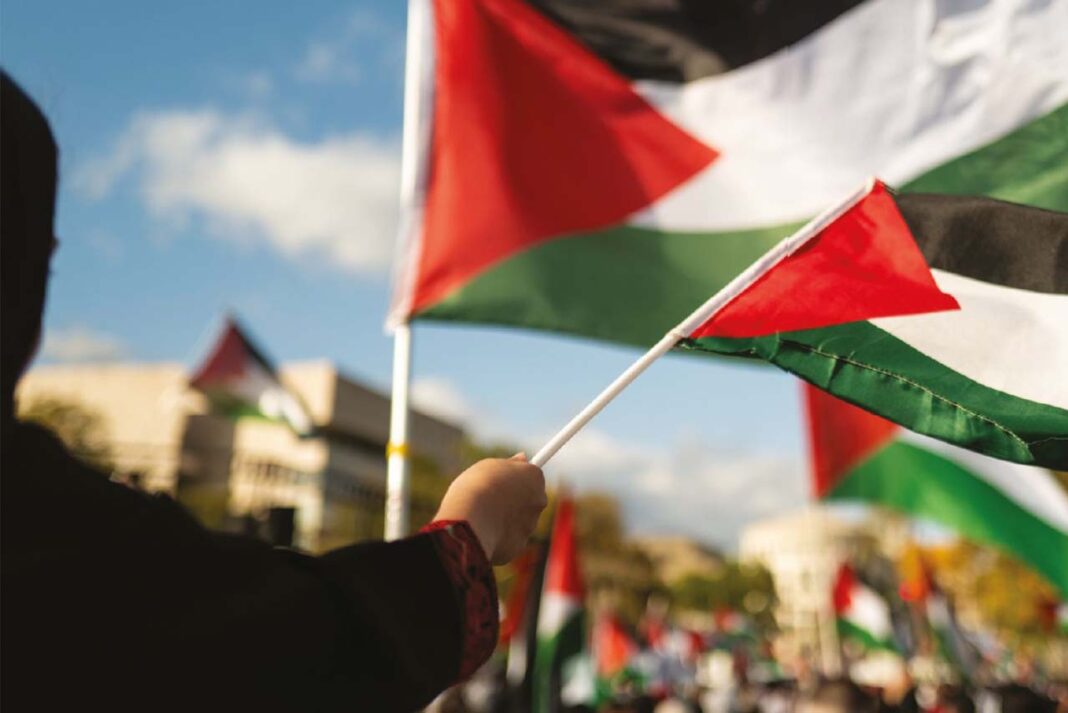The resilient Palestinian society has faced multifaceted traumas such as displacement, occupation, war and exile throughout the 20th century. During these adversities, they constructed their identities and memories through cultural narratives such as poetry, stories, oral narratives and with their music. These types of cultural creative productions are not only a type of the Palestinian resilience, but also a bridge that carries along the identity, pain and hope of a society from generation to generation. The narrative identity, pain, and memory of Palestinians is not only about the historical narration of being the victim, instead, it is the embodiment of creative memory, collective resistance and the effort to re-exist. This identity sometimes comes to life in the leitmotif of a song, in a story told by the grandmother, or in the melody rising from the rubble of a collapsed house.
Understanding Narrative Identity And Its Role In Memory
Narrative identity is defined as the internalized and evolving self-story that an individual creates in order to give their life purpose and meaning. It is a process in which the individual and society create a whole by making sense of their past experiences. However, narratives do not simply reflect the past; they draw an internal map of who we are, how we remember, and how we continue to exist. According to Paul Ricoeur, a French philosopher of the twentieth century (Stanford Encyclopedia of Philosophy 2025), narrative identity answers the question of how an identity can represent both permanence and change. Ricoeur aims to address the questions of who and change and permanence using a philosophy of narrative (Crowley 2003, 2). According to him, narrative has a unifying function, integrating the interruptions and ruptures in the subject’s life within the flow of time. Thus, narrative carries both fragility and resilience, just like the collective memory of societies shaped by trauma. In this context, the sense of narrative identity flows through the veins of collective memory.
Memory is not only a storage of historical facts, but also a space where people reconstruct themselves and continually redefine their identity. Especially in the context of traumatic social experiences, narratives become essential tools for healing, reshaping, and transmitting this memory to future generations.
The Role Of Poetry: The Poetic Resistance Of Memory
In Palestinian society, poetry is not only a form of aesthetic expression; it is also a means of identity construction, a site of collective memory, and, most importantly, a silent yet profound tool of resistance. Mahmoud Darwish’s poetry is one of the clearest examples of this function. Mahmoud Darwish, considered Palestine’s most powerful poetic voice, is a poet who was born in the village of al-Birwa, which was occupied and later destroyed in 1941. Throughout his life, Darwish produced works particularly about the themes of exile, belonging, and loss. By weaving the pain, dreams and longings of Palestinian society into words, he creates a new language of existence from exile, lost lands and dispersion.
Darwish’s iconic poem “Identity Card” is a classic illustration of how poetry may be a statement of existence that resists erasure. “Write down!” (Darwish 2025) is the refrain in his words. He says, “I am an Arab” (Darwish 2025), claiming his heritage, existence, and right to live on his ancestral territory. This is the collective pulse of a people who have been repeatedly tried to be erased by their legal and territorial identity; it is not just a personal statement.
The poem grows in outrage, but instead of using hate, it offers a warning:
“Beware…
Of my hunger
And my anger!” (Darwish 2025)
Darwish presents poetry as a political act that demands recognition but refuses to dehumanize. In this way, poetry serves as a channel for collective memory. It captures suffering as well as resilience.
Representation Of Handala: The Resistance Of A Child Turning His Back
Handala, a cartoon character drawn by Palestinian artist Naji al-Ali, has evolved into a worldwide representation of resistance and collective memory that is ingrained in a people’s history (Treisman 2024). Since its initial publication in 1969, this young figure has become one of the most beautiful depictions of the Palestinian people’s fight for identity, exile, and occupation.
Handala is depicted with short hair, tattered clothes, and always with his back turned. The age of Handala never changes — he always stays eleven, which is the age at which Naji al-Ali was exiled. This points to childhoods cut short, and to memories that will never grow old. Thus, Handala is the embodiment not only of an individual trauma but of a national one.
Oral Narratives: Storytelling As Resistance And Identity
The Nakba, or “Catastrophe” in 1948, with the expulsion of hundreds of thousands of Palestinians from their homes, fragmented not only lands but also narratives. Each exile carried with it a narrative. These oral stories in refugee camps and on the streets of distant lands kept a people’s memory alive.
Every word uttered resonates with another; folk narratives proliferate, transform, but are never forgotten. These narratives not only recall the past; they play a fundamental role in constructing belonging and identity in exile.
For people who lost their homes, “home” became narrative itself. Olive trees, fountains, and playgrounds of old stories became carriers of memory when physical lands were lost. These oral traditions were also forms of resistance — they gave voice to those silenced by bureaucratic history.
The Sound Of Resilience: The Musical Pulse Of Palestinian Resistance
Palestinian music has been one of the most powerful ways to express the tragedies, hopes, and resilience of a people. With melodies that transcend words, music interweaves the mourning of exile, the longing for love, and the yearning for freedom. Since the Nakba, music has functioned like a compass in the memory of displaced people: pointing to the past, giving meaning to the present, and offering hope for the future.
Recurring themes in Palestinian music are migration, loss, love, and patriotism. In these melodies, love often symbolizes not the beloved, but the lost land. Despite being Lebanese, Fairuz’s songs for Palestine are a strong illustration of solidarity that crosses borders. Her elegy for Jerusalem, “Zahrat al-Mada’in,” is a hymn to remembrance, defiance, and holiness:
“O Jerusalem O Jerusalem O Jerusalem O city of the prayer
Our eyes are set out to you everyday…”
These songs cross boundaries; in their melodies, every Arab, oppressed person, and exile hears their own story.
Conclusion
Palestine keeps speaking through the ink of poets writing from exile, the winds that carry songs across borders, and the silent defiance of a child who never reveals his face. Through narrative identity, Palestinians re-remember themselves, word by word, song by song, piece by piece. And in every whispered story, every beat of a drum, every flicker of memory — Palestine is born again.
References
Crowley, Paul. “Paul Ricœur: The Concept of Narrative Identity, the Trace of Autobiography.” Paragraph 26, no. 3 (2003): 1–12. http://www.jstor.org/stable/43263868.
Daboor and Al Nather. “Amina.” Genius Lyrics. Accessed August 5, 2025. https://genius.com/Daboor-and-al-nather-amina-lyrics.
Darwish, Mahmoud. “Identity Card.” Marxists Internet Archive. Accessed August 5, 2025. https://www.marxists.org/subject/art/literature/darwish/1964/identity-card.htm.
Darwish, Mahmoud. “Passport.” Marxists Internet Archive. Accessed August 5, 2025.
https://www.marxists.org/subject/art/literature/darwish/1964/passport.htm.
LyricsTranslate. “هنا وقلبي وعيوني أنا – Ana wa ʿuyūnī wa qalbī hunā (I and My Eyes and Heart Are Here).” Accessed August 5, 2025. https://lyricstranslate.com/en/node/77817.
LyricsTranslate. “Nací en Palestina – I Was Born in Palestine.” Accessed August 5, 2025.
https://lyricstranslate.com/en/nac%C3%AD-en-palestina-i-was-born-palestine.html.
“Mahmoud Darwish.” Poetry Foundation. Accessed August 5, 2025.
https://www.poetryfoundation.org/poets/mahmoud-darwish.
McAdams, Dan P. “Narrative Identity.” In Handbook of Identity Theory and Research, edited by Seth Schwartz, Koen Luyckx, and Vivian Vignoles, 99–115. New York: Springer, 2011.
https://doi.org/10.1007/978-1-4419-7988-9_5.
“Paul Ricœur.” Stanford Encyclopedia of Philosophy. Accessed August 5, 2025.
https://plato.stanford.edu/entries/ricoeur/.
Treisman, Rachel. “How Handala, a Cartoon of a 10-Year-Old Boy, Became a Palestinian Symbol.” NPR, February 6, 2024.
https://www.npr.org/2024/02/06/1228097975/handala-naji-al-ali-cartoon-palestinian-symbol.
“48 Yıldır 10 Yaşında Olan Çocuk Hanzala.” GZT Jurnalist. Accessed August 5, 2025.
https://www.gzt.com/jurnalist/48-yildir-10-yasinda-olan-cocuk-hanzala-2603619.
https://www.milleworld.com/most-romantic-mahmoud-darwish-quotes/


